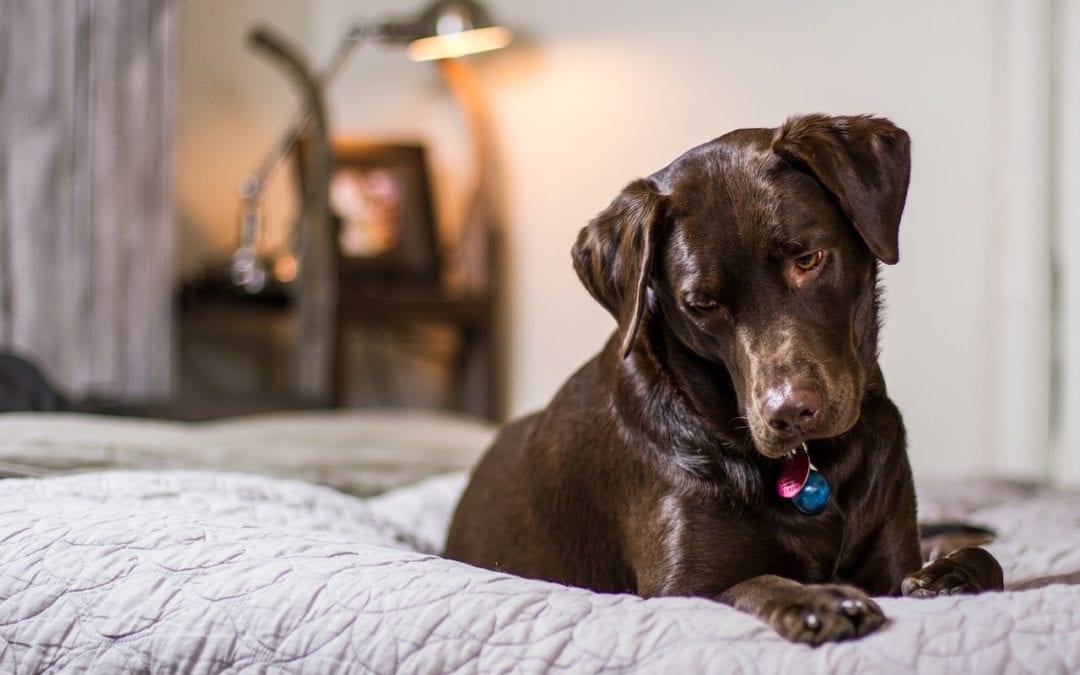What are molds?
Molds are opportunistic fungi that reside on plants, decaying debris, within our homes, and often as inhalants in the air we breathe. These fungi are usually dependent on organic substances for nutrients and energy and grow best in warm humid environments. However, there is no surface of the planet where some species of mold does not exist, and they can grow in refrigerators, shower stalls, basements, houseplant mulch, filters, and within evaporative coolers and humidifiers. Spores are most commonly found in homes near lowland areas and lakes, in older homes, and within damp basements or attics. Depending on the type of mold, the spore may be dispersed in rainfall, humidity or by wind.
How can molds cause allergies?
Just as pollens from trees, grasses, and weeds can be triggers for environmental allergies, so can various types of molds. Some molds are very common in outdoor environments, while other molds more common inside dwellings. When an allergy test identifies a positive reaction to a mold, it is important that we have a clear idea of where your pet spends time, so that when possible we can minimize mold exposure, and so that we can select the most appropriate molds for allergen Immunotherapy.
Specific molds and the areas they are located?
The following are some of the most common molds found in and around the home.
- Acremonium –Year around fungus that thrives on wet surfaces such as water bowls, toilets, sinks, drain pipes, laundry tubes, damp floors and in standing water puddles.
- Alternaria – Indoors these are found in basements and damp areas such as windows, doorways, and humidifiers. Outside this old can be present in wooded areas, grasses, and in organic debris such as leaves and mulch.
- Aspergillus – Indoors these are common in closed environments such as humidifiers, evaporative coolers, basements, attics, and barns.
- Aureobasidium – An extremely common soil fungus, capable of surviving indoors on wet surfaces such as damp tile, sinks, water bowls, in sewage and drain pipes, and in laundry rooms and basements.
- Bipolaris –Very common outdoors, especially in tropical and subtropical areas, and occasionally found indoors. Outdoor the fungus grows best on wood mulch, leaf piles, decaying vegetation and in soil. Indoors it thrives in damp rooms, crawl spaces, and doghouses.
- Cladosporium – High levels are found in most rooms inside homes, but their numbers are often increased in damp areas like basements, bathrooms, crawl spaces and closets.
- Drechsiera – Very common outdoors, especially in tropical and subtropical areas, and occasionally found indoors. Outdoor the fungus grows best on wood mulch, leaf piles, decaying vegetation and in soil. Indoors it thrives in damp rooms, crawl spaces, and doghouses.
- Fusarium – Very common outdoors in gardens and crop fields (especially near strawberry and tomato crops) with peak seasons in summer and fall. The fungus can also grow on indoor plants.
- Mucor – This fungus is primarily outdoor with summer and fall being peak seasons. It thrives on spoiled meats, manure, barn floors, garbage cans, and unclean food production sites.
- Penicillium – High levels in damp areas like basements where they colonize foods, clothing, paper, and leather.
- Rhizopus – Common in decaying foods, bread, garbage cans, uncleaned food preparation areas, and refrigerators.
- Stemphylium – A common indoor and outdoor fungus with peak levels in warm humid areas or in places with rainy periods. Outdoors it is a soil fungus found in wooded areas, mulch, leaf piles, home gardens and in farm crop areas (especially tomatoes, asparagus, and cabbage fields).
- Trichothecium –Common in soil and on rotting plants, wood and mulches. This fungus is frequently tracked indoors and concentrates in basements and other damp areas.
What can I do to reduce mold growth in my home?
There are several ways you can help to control the growth of molds in your home.
- Use fungicidal sprays in areas prone to mold to eliminate fungal spores.
- Change filters on air conditioners, furnaces, and humidifiers frequently.
- Use dehumidifiers to reduce the moisture in the air, especially in spaces prone to moisture like basements.
- Avoid houseplants, which allow for mold growth in the soil. If you cannot eliminate houseplants from your home, then use fish tank charcoal over the soil to help minimize moisture on the top of the soil.
- Use algaecide in indoor water features or fish tanks to prevent algae overgrowth. Clean fish tank decorations with chlorine bleach and then rinse thoroughly before returning to the tank.
- Use synthetic fiber in pet bedding and clean bedding frequently.
- Feed high quality pet food and store dry food in a solid airtight container.
- Clean pet food storage areas and bins with chlorine bleach solution monthly.
- Limit your pets exposure to areas with increased moisture such as basements, bathrooms and laundry rooms.
References:
- Fadok V, Grier T, Griffin CE, et al. Greer Allergy Immunotherapy Compendium. 2014, pp 168-170.
- American Academia of Allergy, Asthma, and Immunology. “Mold Allergy.” Viewed at: http://www.aaaai.org/conditions-and-treatments/allergies/mold-allergy
- Reedy LM, Miler WH, and Willemse T. Allergic skin diseases of dogs and cats. W.B. Saunders Company, Philadelphia, 1989, pp 55-56.

